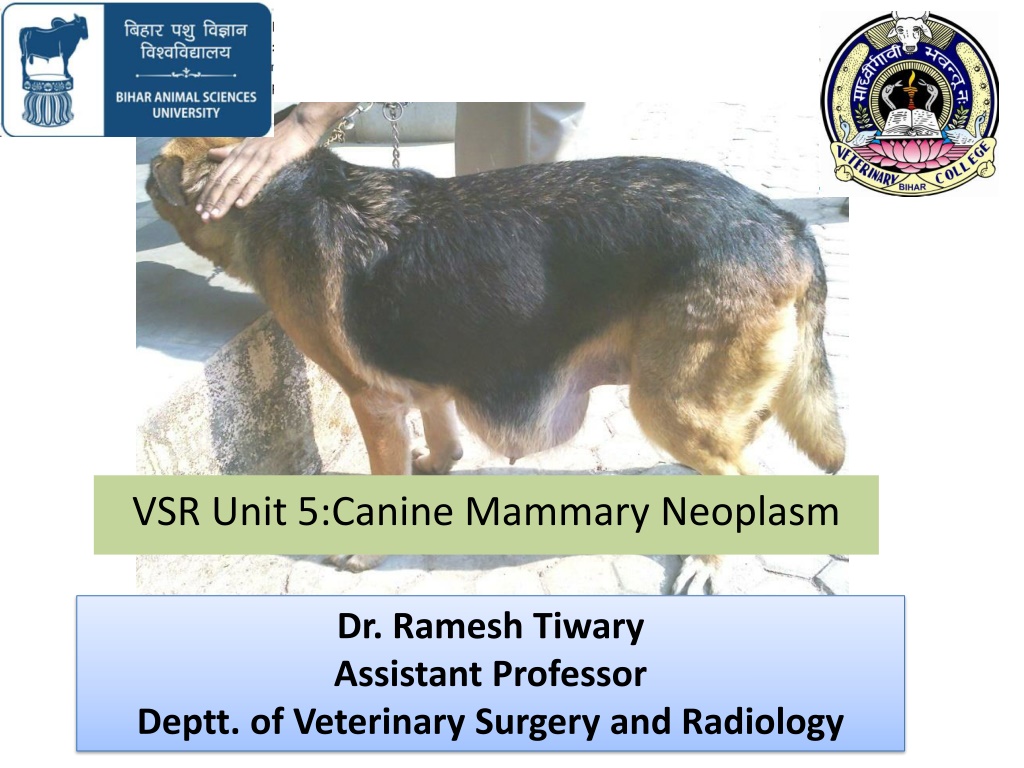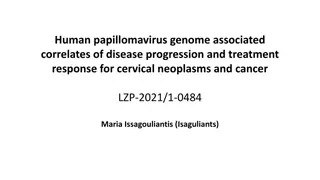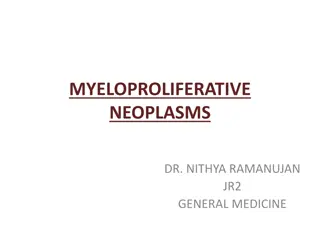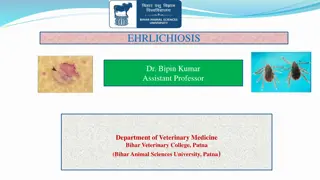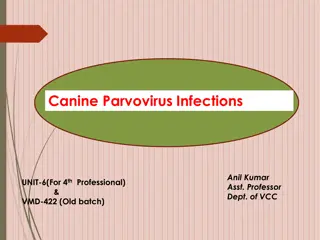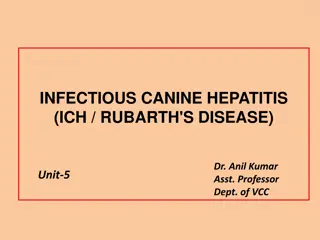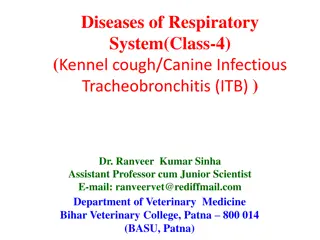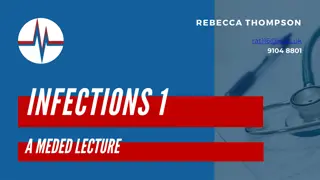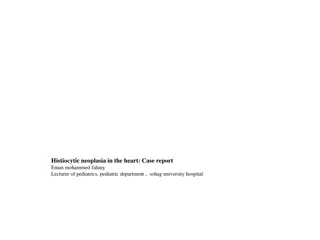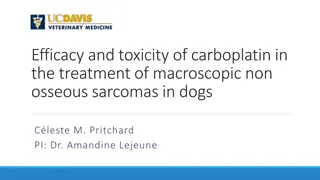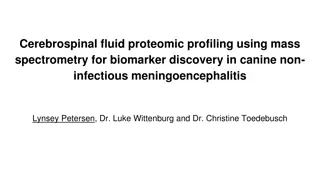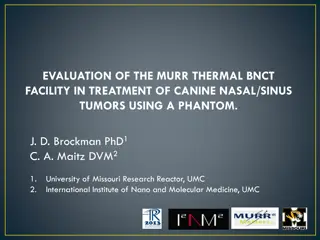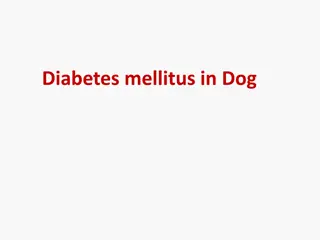Canine Mammary Neoplasms: Overview and Management by Dr. Ramesh Tiwary
Canine mammary neoplasms, including benign adenomas and malignant carcinomas, are common in intact female dogs. This article discusses the clinical signs, diagnosis methods like FNAC and biopsy, WHO clinical staging system, and the importance of palpating regional lymph nodes for prognosis assessment. Surgical resection is the primary treatment, with a 50:50 rule stating half are benign and half malignant, with aggressive inflammatory carcinomas also present. Early spaying reduces the risk significantly before the first estrus.
Uploaded on Sep 22, 2024 | 0 Views
Download Presentation

Please find below an Image/Link to download the presentation.
The content on the website is provided AS IS for your information and personal use only. It may not be sold, licensed, or shared on other websites without obtaining consent from the author. Download presentation by click this link. If you encounter any issues during the download, it is possible that the publisher has removed the file from their server.
E N D
Presentation Transcript
VSR Unit 5:Canine Mammary Neoplasm Dr. Ramesh Tiwary Assistant Professor Deptt. of Veterinary Surgery and Radiology
Mammary Tumor Tumors of the epithelial cells of the mammary gland, which are either (malignant) carcinoma or (benign) adenoma or Complex adenoma and carcinoma The most common neoplasms in intact female dogs Very rare in male dogs, mostly benign 50 : 50 rule: 50% of mammary masses are benign, and 50% are malignant. Of the 50% that are malignant, 50% will recur or metastasize following the fi rst surgical resection.
OVH/MGT Before first estrus 0.5% Between 1 &2nd Estrus 8% Second estrus & 2.5 Years Age 26% Cat: 6M, 12M, 24M 91% 86% 11% Reduction
Five pair mammary gland. Caudal 4th and 5th mammary glands mostly get affected (more mammary tissue there).
Clinical Sign Single or multiple nodules located within the mammary gland associated with the nipple or the gland itself). Benign lesions tend to be small, well circumscribed, firm on palpation. Malignant tumors are >5cm in size tendency to develop ulceration
Inflammatory mammary carcinomas rare, aggressive tumor c/by macroscopic resemblance to acute mastitis, presenting with edema, firmness, erythema, and pain.
Palpation of Lymph nodes Regional lymph nodes should also be examined Inguinal (inner thigh) Axillary (armpit) Prescapular nodes in front of the shoulder Popliteal nodes behind the knee Abdominal lymph nodes
Diagnosis FNAC: Inflammation Infection Tumor The aspirate almost never show whether itbenign or malignant Biopsy must be performed.
WHO Clinical Staging System for MGT The higher the stage, the worse the prognosis
Surgery Surgery is the treatment of choice to remove mammary tumors, with the exception of IMC IMC- due to the inflammatory nature of the cancer, surgical incision often does not heal well, Blood clotting abnormalities and edema can also occur. Treatment for IMC is usually palliative, not curative. Supportive care for any systemic illness and daily administration of piroxicam (0.3 mg/kg per os). Duration of survival for dogs with IMC is 6 months with piroxicam therapy and less than 1 month with other treatments
100% of benign and 50% of malignant tumors are cured with surgery alone Approximately 75% of dogs with mammary tumors are treated with simple surgeries Lymph nodes Removal:Tumor Near Rear Leg- Inguinal Lymph node even seems normal Axillary (armpit) node: If metasatsis Radical mastectomies are usually not necessary for Spayed dogs a lumpectomy or a simple mastectomy (which removes just the mammary gland involved in the tumor) can suffice.
Lumpectomy: removal of a mass or part of a mammary gland Simple mastectomy: excision of an entire gland Unilateral mastectomy: Removal of all mammary glands, subcutaneous tissue, and associated lymphatics on one side of the midline. Bilateral mastectomy:Simultaneous removal of both mammary chains.
